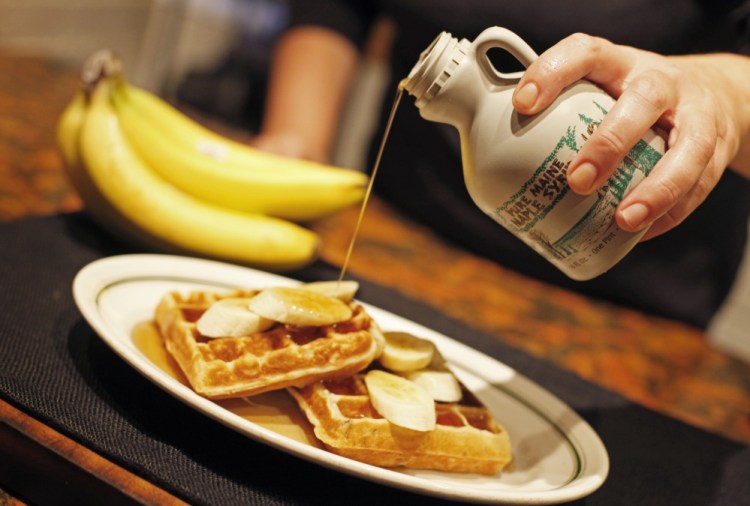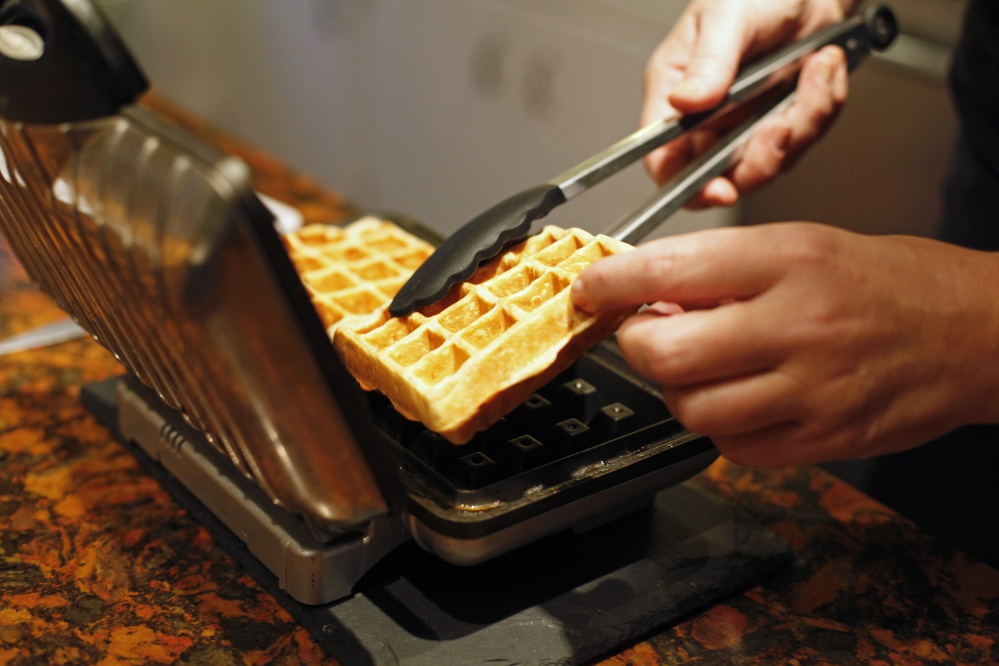The average American eats 27 pounds of bananas (108 pieces of fruit) annually. The odds are better than one in four that you’re going to eat one today.
The top five banana-producing nations are India, China, Uganda, Philippines and Ecuador. So your banana traveled a long way along the “cold chain” to sit on your counter. The cold chain is the continuous series of temperature-controlled units (truck trailers, marine containers, rail cars, cold storage warehouses and grocery store cases) required to deliver perishable food (fruits, vegetables, meats and dairy products) from faraway farms to forks everywhere.
In “Food Foolish,” authors and cold chain industry veterans John Mandyck and Eric Schultz connect the dots between cold chain technologies, food waste, world hunger and greenhouse gas emissions.
Greening the chain means making its underlying technologies more energy efficient both mechanically and via computerized monitoring systems; and using refrigerants other than hydrofluorocarbons to make things cold, said Mandyck, chief sustainability officer with United Technologies and Industrial Systems.
One of United Technologies’ subsidiaries, Carrier, is a major manufacturer of heating, air-conditioning and refrigeration systems. Its alternative refrigerant of choice is recaptured CO2, which has a global warming potential that is 2,000 to 4,000 times lower than conventional ones, Mandyck said.
With these changes, the cold chain could expand into developing nations to help solve logistical issues associated with alleviating hunger, and do so without raising the chain’s overall carbon footprint, Mandyck explained. But you must factor in how cold chain technology can take a bite out of the soaring food waste tally.
The carbon footprint for growing and transporting food that never gets eaten worldwide represents about 3.3 billion metric tons annually. “If food waste were a country, it would be the third largest emitter of greenhouse gasses behind China and the United States,” Mandyck and Schultz wrote.
The Institute of Mechanical Engineers says refrigerated transportation alone could cut food waste in developing countries by 25 percent, thereby offsetting emissions from new refrigeration containers.
If you’re not a refrigeration geek and/or greenhouse gas watchdog, why should you give a hoot about advanced cold chain technology? Well, because it may be coming to a refrigerator near you soon.
In 2013, Hannaford opened in Turner the first American grocery store to sport a CO2-based refrigeration system and has since received the U.S. Environmental Protection Agency’s GreenChill platinum certification (the grocery store version of the EnergyStar rating) for doing so. Hannaford spokesman Eric Blom could not give a time frame for a rollout of CO2-based systems across the chain’s 182 locations because the company is still evaluating the system.
The U.S. Department of Energy recently published a study comparing the energy and environmental costs of refrigeration in the Turner store to one of similar size in Bradford, Vermont. The new system exhibited a 15 percent reduction in overall climate impact compared to the store in Bradford with energy consumption being about equal, according to the study.
This may be too much information to take with just a single banana. Perhaps using the overripe one you have stashed in your freezer to make waffles (see recipe) will give you more time to digest it.
Banana-Walnut Waffles
I’ve adapted a standard thicker pancake recipe into waffles here to replace the commercial waffles my kids used to like and to use up overly browned bananas, both of which made it to my freezer via the cold chain, the uninterrupted series of temperature-controlled storage and distribution systems that bring foods safely to your local grocery stores.
Makes 8 waffles
2 cups all-purpose flour
2 tablespoons sugar
1 tablespoon baking powder
½ teaspoon salt
1-1/4 cups milk (cow’s or a nondairy alternative)
1 teaspoon apple cider vinegar
3 tablespoons melted butter or melted coconut oil (plus more to grease the waffle iron)
1 mashed very ripe banana
1 teaspoon vanilla extract
¼ cup finely chopped, toasted walnuts
Sliced banana and maple syrup for serving
Whisk together the flour, sugar, baking powder and salt in a large bowl.
In a medium-sized mixing bowl, vigorously whisk the milk and apple cider vinegar until the mixture is a little frothy. Mix in the butter or coconut oil, banana and vanilla.
Pour the wet ingredients into the dry ingredients and mix them until the batter is smooth. Stir in the walnuts.
Allow the batter to sit for a few minutes while preheating the waffle iron.
Grease the waffle iron. Ladle the batter into the iron based on the manufacturer’s instructions. Cook the waffles until golden brown (the time will vary based on your iron).
Serve the waffles with sliced bananas and maple syrup.
Christine Burns Rudalevige is a food writer, recipe developer and tester, and cooking teacher in Brunswick. She writes about feeding her family Maine seafood at familyfish.net. Contact her at cburns1227@gmail.com.
Copy the Story LinkSend questions/comments to the editors.




Success. Please wait for the page to reload. If the page does not reload within 5 seconds, please refresh the page.
Enter your email and password to access comments.
Hi, to comment on stories you must . This profile is in addition to your subscription and website login.
Already have a commenting profile? .
Invalid username/password.
Please check your email to confirm and complete your registration.
Only subscribers are eligible to post comments. Please subscribe or login first for digital access. Here’s why.
Use the form below to reset your password. When you've submitted your account email, we will send an email with a reset code.